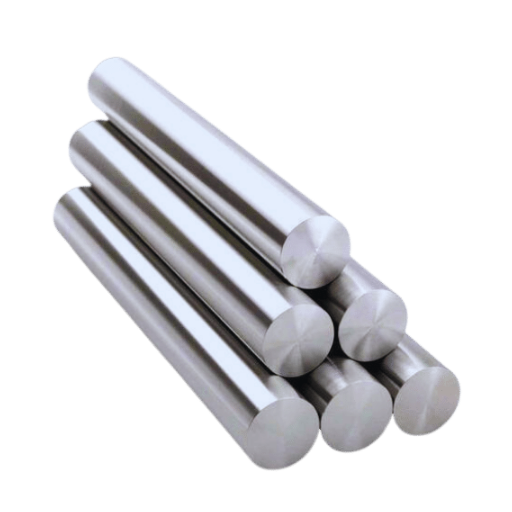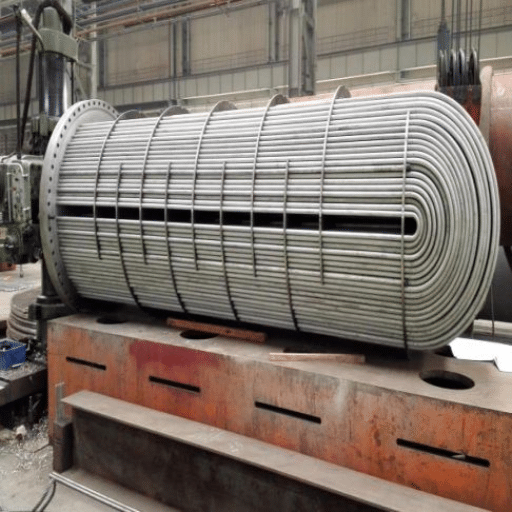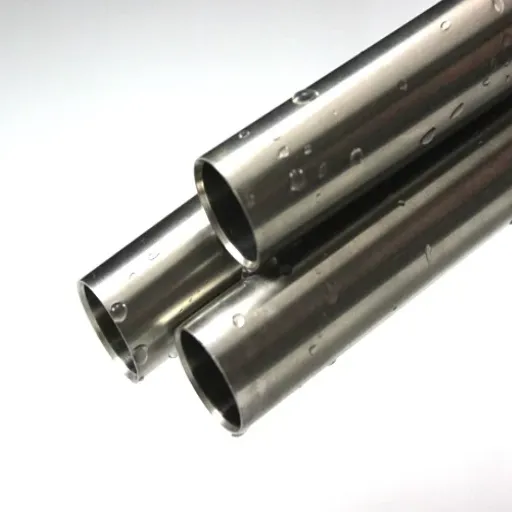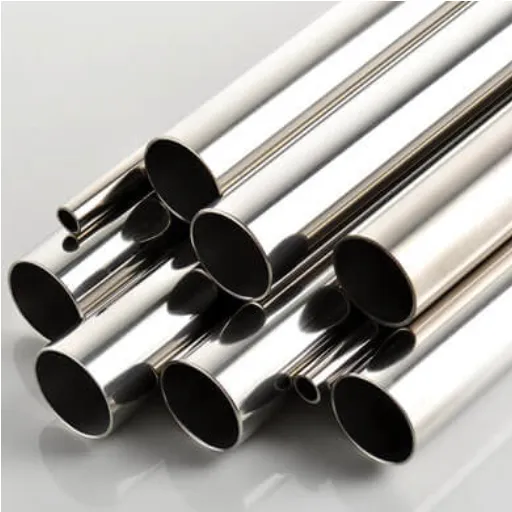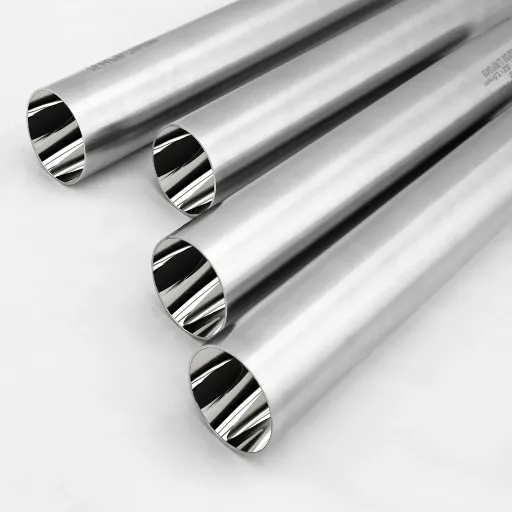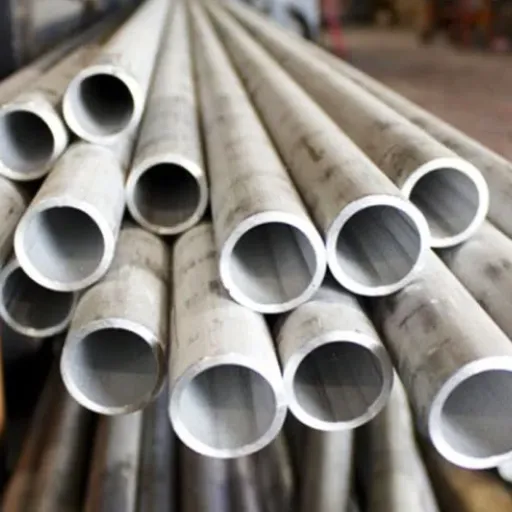Steel is the backbone of countless industries, and among the many grades available, 4140 steel stands out as a true workhorse. Known for its remarkable strength, toughness, and versatility, this medium-carbon alloy steel has become a staple in applications ranging from automotive and aerospace to construction and heavy machinery. But what makes 4140 steel so unique? To truly appreciate its capabilities, one must take a closer look at its mechanical properties and how they contribute to its widespread use. This article dives deep into the science behind 4140 steel, breaking down its composition, tensile strength, hardness, and adaptability. Whether you’re an engineer, a manufacturer, or simply someone curious about material properties, this guide aims to equip you with a detailed understanding of why 4140 steel remains a top choice in demanding applications.
What Are the Key Properties of 4140 Steel?
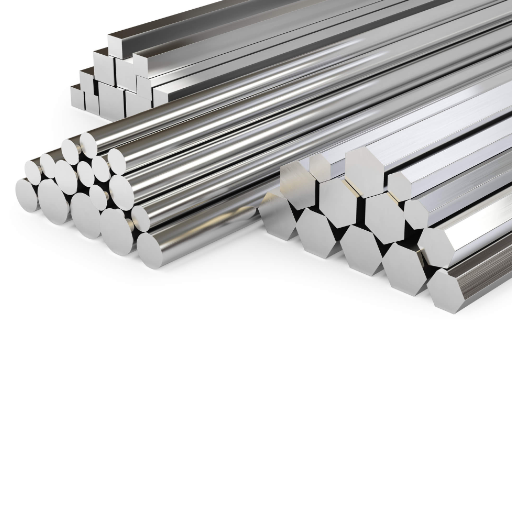
Understanding the Chemical Composition of 4140 Steel
A type of steel primarily consisting of iron, carbon, and other alloying elements that improve its mechanical properties. This 0.38% to 0.43% carbon content allows the 4140 steel to be categorized as a medium carbon steel and offers a fair balance between strength and ductility. The most important alloying constituents for the performance of 4140 steel would involve chromium, molybdenum, and manganese. Chromium at about 0.90-1.20% provides wear resistance and corrosion resistance to the steel. Molybdenum, at 0.15-0.25% levels, makes the material stronger at elevated temperatures and improves toughness. Manganese at a typical concentration of 0.75-1.00% helps hardenability and tensile strength.
Further amounts of silicon ranging from 0.15% to 0.35% are added to promote steel toughness and deoxidization during production. Traces of phosphorus (max. 0.035%) and sulfur (max. 0.040%) are retained at minimal concentration levels to avoid their adverse effects on the steel’s structural integrity and machinability. These elements, thus, combine perfectly, allowing 4140 steel to exhibit extraordinary mechanical performance, leading to great commercial acceptance in a wide range of demanding applications.
The exact chemical makeup is what allows 4140 to be one of the most versatile steels, since furnace treatments followed by quenching and tempering can be used to tailor its properties further to fit specific application requirements. Hence, the complementary effects of the alloying elements provide 4140 steel with very good toughness and strength along with a workable machinability, leading to its use for critical components in the automotive, aerospace, and heavy machinery fields.
Exploring the Physical Properties of 4140 Steel
As a chromium-molybdenum alloy steel, 4140 possesses the best blend of strength, toughness, and wear resistance. Among the prominent physical features is the tensile strength range, generally between 655 MPa and 862 MPa in the annealed state-which may be increased further by various heat treatment operations like quenching and tempering. This substantial tensile strength, in combination with moderate ductility, renders 4140 steel suitable for applications subjected to dynamic stresses and heavy loads.
The other important property of 4140 steel is hardness. The heat-treated steel may be hardened from 54 to 59 HRC, depending on the exact heat-treatment process and whether the cooling rate varies. This hardness and wear resistance are very important qualities that make 4140 steel very suitable for manufacturing equipment and high-performance automotive parts that are subjected to wear. It also has good fatigue resistance, which further helps the reliability of 4140 steel throughout long working cycles.
In more ways, the machinability and impact resistance of 4140 steel raise the metal’s profile in industrial use. 4140 steels in a hardened state are considered difficult to machine; however, it will be much better in the annealed condition, provided that proper cutting tools and techniques are used. Being impact-resistant is another useful screening property that adds durability when subjected to sudden forces or shocks. Together, these properties exhibit that 4140 steel carries a wide application base in various high-stress scenarios.
Comparing 4140 vs 4130 Steel: What’s the Difference?
A73 standard describes 4140 steel as annealed, tempered, or annealed and tempered condition steels. Additionally, it is associated with all of the other types of evaluations. In the same way, 4130 steel may be supplied in an annealed, normalized, or quenched and tempered condition, whereby it can be identified with any of the previously mentioned types of evaluations.
|
Aspect |
4140 Steel |
4130 Steel |
|---|---|---|
|
Carbon Level |
0.38-0.43 |
0.28-0.33 |
|
Tensile Power |
Higher |
Moderate |
|
Hardness |
Greater |
Lesser |
|
Flexibility |
Lower |
Higher |
|
Workability |
Moderate (65%) |
Better (70%) |
|
Welding Ease |
Needs pre-/post-treatment |
Easier |
|
Uses |
Gears, shafts |
Tubing, frames |
|
Expense |
Slightly higher |
Slightly lower |
How Does Heat Treatment Affect 4140 Steel?
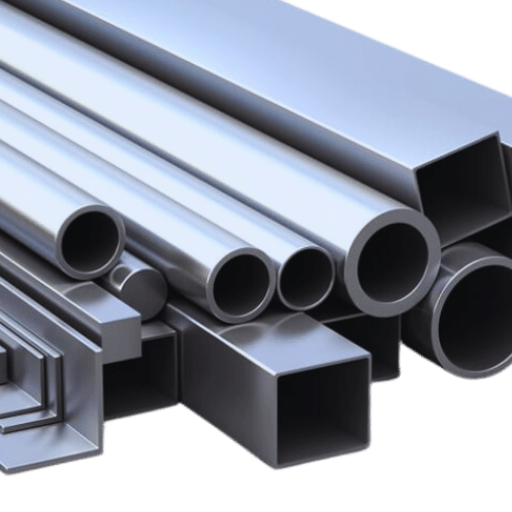
Impact of Annealing on 4140 Steel
Annealing 4140 steel improves its mechanical properties greatly by reducing hardness, relieving internal stresses, and improving machinability. In annealing, 4140 steel is normally held at an annealing temperature of between 1,570°F and 1,650°F (855°C and 900°C), followed by a very slow cooling, usually in the furnace, to ensure transformation occurs uniformly. This allows the steel to become more ductile, making it less prone to cracking or brittle failure during machining or forming operations.
The annealing also refines the microstructure, thus ensuring a homogeneous distribution of carbide particles, which in turn will improve the strength of the material against various stresses. Hence, annealed 4140 steels become best suited for applications that require good machining ability, such as gears, crankshafts, and heavy-duty fasteners. While such treatment does reduce tensile strength compared to quenched and tempered specimens, this trade-off is favorably accepted in applications requiring machinability and toughness.
Considering heat-treatment strategies, it is essential to select the correct one for 4140 steel to obtain the right balance of properties. The precise control over the rate of cooling, as well as the maintenance of temperature at a certain level, is therefore a recipe for success, guaranteeing the holding capacity of the steel conversion under very demanding working conditions.
Enhancing Hardness through Heat Treatment
Heat treatment methods for 4140 steel increase hardness and wear resistance significantly, with quenching and tempering being some of the most famous methods. The steel is heated to an austenitizing temperature inside the range of 1550°F to 1650°F (843°C to 899°C), then quenched in oil or water. The purpose of this sudden cooling is to form a martensitic structure, which is hard and relatively brittle, and provides hardness.
Tempering is done immediately after quenching to relieve hardness caused by brittle martensitic transformations. The steel is usually reheated at a temperature between 400 and 1200°F (204 to 649°C) for varying periods depending on the desired mechanical property. The higher the temperature, the less brittle the steel; however, it also becomes less hard.
With appropriate heat-treatment cycles, a hardness of more or less 54 to 58 HRC can be achieved, depending on the process studied and adopted. Good hardness and toughness give 4140 steel wide applications in demanding environments, such as in manufacturing gears, shafts, and structural components. Strict control of temperature and use of precision furnaces make sure that consistent and repeatable results are obtained to match the required mechanical attributes of the material.
Understanding Tensile Strength Post Heat Treatment
Tensile strength refers to a fundamental mechanical property in materials, determining the maximum tensile stress a material can withstand until breaking. For 4140 steel, the tensile strength after heat treatment entirely depends on quenching and tempering. The choice of quenching medium, along with cooling rates and tempering temperatures, greatly governs the kind of microstructure obtained and the kind of mechanical properties imparted to the steel.
From quenching, martensite is formed, which increases strength but imparts brittleness. Tempering is then a process to reduce internal stresses and increase ductility without any great sacrifice of strength. Data from the industries indicate that 14/0 steel, heat-treated under proper conditions, exhibits tensile strengths ranging from 950 MPa to 1150 MPa, depending on the applied tempering temperature. For example, tempering temperature variations ranging from about 200°C to 650°C will make a difference in strength, with lower temperatures yielding hardness and tensile strength, whilst higher temperatures encourage toughness and less brittleness.
Accurate metrology instruments like tensile testing machines are necessary to ascertain material behavior following heat treatment, and with control systems, establish proof that compliance with ASTM A193, A322, or equivalent has been met. The optimization of these for producing components is thus a matter of toughness, durability, and functional sustainability under extreme engineering applications.
What Are the Applications of 4140 Steel in the Industry?
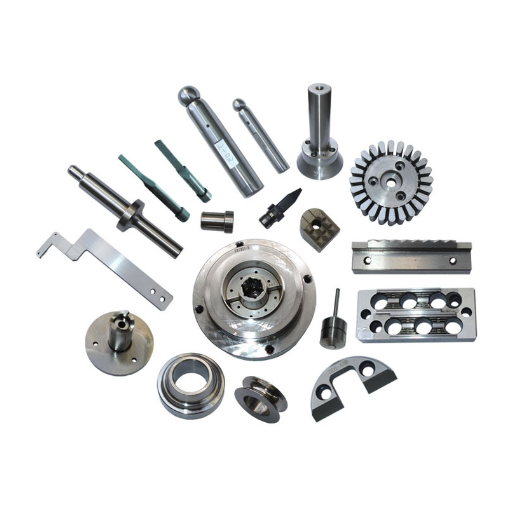
The Role of 4140 Steel in Industrial Applications
4140 steel is a versatile alloy steel that, by strength, toughness, wear resistance, and fatigue resistance, finds suitability in a wide array of industrial applications. For high-performance materials that must endure mechanical stress, heat, and corrosive environments, it has apt properties. The following are five key industrial applications of 4140 steel:
- Manufacture of Gear and Shaft: Shafts and gears made of 4140 steel find common uses in automotive transmissions, heavy machinery, and industrial equipment. The high tensile strength and durability of this steel enable components to perform under cyclic loading and high torque conditions reliably.
- Making Tooling and Dies: Since it can undergo heat treatment and is resistant to deformation, the steel is often chosen for tooling, die molds, and fixtures. These tools benefit in that they are not easily worn out from extended use.
- Oil and Gas Industry Components: 4140 steel constitutes the manufacture of drill collar, pipe, and wellhead equipment, where strength and toughness conditions abound in high-pressure and temperature environments during downhole drilling and production systems.
- Crankshaft for Automobile: The Crankshaft for an automobile requires a material with strong fatigue resistance and easy machining. 4140 steel is considered an industry standard because of the medium balance of mechanical properties that allows the production of a crankshaft able to resist heavy vibrations and engine stress.
- High Strength Fastener: These bolts, studs, and high-strength fasteners rely on 4140 steel to resist tensile and shear loads. Their application includes, but is not limited to, bridge construction, wind turbines, and aerospace assemblies.
The versatility of 4140 steel across industries is a testimony to a material balancing out performance and reliability to guarantee operational efficiency within rigid engineering standards.
Why Choose 4140 Steel for High Strength Needs?
4140 steel is a chromium-molybdenum alloy steel known for its hardness and resistance to wear, and very high tensile strength. This material stands up and fulfills the needs for important applications requiring mechanical strength, coupled with working conditions of ruin. It reaches tensile strengths ranging from approximately 850 MPa to 1000 MPa, after heat treatment; hence, it works well in high-stress scenarios. Being hard, the good deformation resistance and fatigue life can also be attributed to it, up to 50 HRC, after proper quenching and tempering.
So, machinability and heat treatments are some aspects in general that derive engineering applications for 4140 steel. 4140 can be tailor-designed by annealing, quenching, tempering, and other processes for any given end use without taking a compromise on its performance. Given its tough nature, 4140 steel is better for manufacturing some components like drive shafts, crankshafts, gears, and structural fasteners in certain industries such as the automotive, aerospace, and heavy machinery industries.
Besides, more chromium content brings some corrosion resistance to an alloy, which reduces the surface degradation possibilities occurring in nature. A relatively high content of molybdenum brings toughness to it, which makes it capable of bearing dynamic loads without any fracture. This ability to hold out under varying temperature ranges and loads renders 4140 indispensable to precision engineering applications where reliability, safety, and performance are of utmost concern.
How Do Mechanical Properties Influence the Use of 4140 Steel?
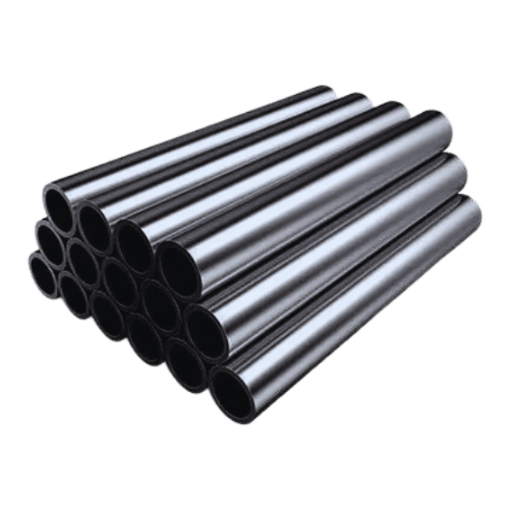
Evaluating the Wear Resistance of 4140 Steel
The resistance imparts 4140 steel by applying a balanced chemical composition comprising carbon, 0.38-0.43%; manganese, 0.75-1.00%; chromium, and molybdenum, ensuring surface hardness and durability, thus requiring the alloy in abrasive working conditions. Heat treatments, like quenching and tempering, are used to raise the hardness above 200 HB (Brinell hardness), contingent upon the treatment.
According to studies, surface engineering approaches like carburizing or nitriding can improve the surface wear performance of 4140 steel further. These techniques create additional hard surface layers that minimize material loss due to friction or repeated contact. Another study comparing untreated samples with those subjected to advanced surface treatment observed a wear decrease of about 50%.
It finds nuclear application in making gears, shafts, and other high-wear components in industrial machinery because of its versatility under different loading conditions and retention of mechanical properties under repeated wear cycles.
Assessing the Strength and Toughness of 4140 Steel
4140 steel’s strength and toughness are mostly dependent on its chemical composition and heat treatment capability. This low-alloy steel contains chromium, molybdenum, and manganese, which balance each other to develop hardenability and resist deformation under stress. Through mechanical tests, 4140 steel is shown to present a tensile strength between 655 MPa and 860 MPa in the normalized state and a great increase in strength on quenching and tempering treatment. Yield strength further compensates for this strength, and hence, 4140 steel is quite effective under high load and cyclic stress.
High Toughness characterizes components that are subjected to impact or sudden loads; these 4140 steel qualities are beautifully enhanced after tempering. The steel continues to resist brittle fracture with a high value of Charpy impact, making it a commonly accepted material in heavy applications like automotive axles, crankshafts, and heavy-duty fasteners. Advanced heat treatments, such as austempering, can improve the balance of strength and toughness even further, enabling dependable performance of the material through various operational conditions.
Moreover, microstructural control by alloying and heat treatment develops its resistance against crack propagation, especially under conditions of dynamic loads. Thus, industries such as aerospace and heavy machinery, which require the highest regard for safety and durability, continue to trust 4140 steel for its proven balance of mechanical strength and toughness. The flexibility of its properties according to varying operational demands further establishes it as a versatile and valuable engineering material.
Understanding the Yield Strength of 4140 Steel
Being of paramount importance, the yield strength of the 4140 steel defines the ability of the metal to withstand stress conditions to the extent that dictates the moment when permanent deformation sets in. Generally, the yield strength of 4140 steel ranges from 60,000 psi to 110,000 psi, depending on heat treatment, chemical composition, and processes during manufacture. Heat treatment is very vital since, for instance, quenching and tempering could greatly increase the yield strength by refining the microstructure and relieving internal stresses.
Apart from heat treatment, chemical composition, in terms of the exact alloying elements of 4140 steel, can significantly influence its mechanical properties. It usually contains about 0.38-0.43% of carbon and other trace elements of chromium, molybdenum, and manganese, whose interplay helps in controlling both hardness and ductility. The grain structure also varies depending on operations, such as forging and rolling, which can be relevant to how stresses are distributed uniformly under load, thereby influencing yield strength depending on the application.
With improvements in metallurgical ultracentrifuge testing and tensile testing of 4140 steel under controlled environmental conditions, the yield strength was observed under various operational loads, thereby forming a refined insight. This test demonstrated that the yield strength of the material could be varied to fit specific environmental or mechanical requirements, thus providing an important reason for utilizing 4140 steel in a variety of industrial applications. Such kind of flexibility helps to ensure that 4140 steel should always be a desired choice where strength and assurance are non-negotiable design.
Why Is 4140 Alloy Steel Preferred Over Other Steels?
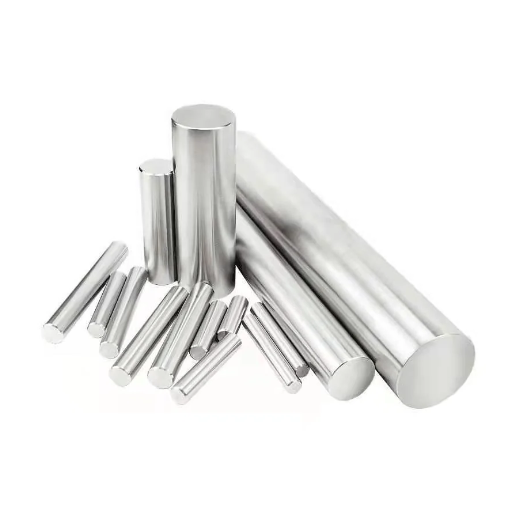
Comparing 4140 and 4130 Steel
Steeltype 4140 has higher hardness content, strength, and carbon with respect to steel type 4130 but ductility and weldability are higher for the other steel type.
|
Aspect |
4140 Steel |
4130 Steel |
|---|---|---|
|
Carbon (%) |
0.38-0.43 |
0.28-0.33 |
|
Strength |
Higher |
Moderate |
|
Hardness |
Greater |
Lesser |
|
Ductility |
Lower |
Higher |
|
Machinability |
Moderate (65%) |
Better (70%) |
|
Weldability |
Needs treatment |
Easier |
|
Forms |
Bars, plates |
Tubes, sheets |
|
Uses |
Gears, shafts |
Frames, tubing |
|
Cost |
Slightly higher |
Slightly lower |
Advantages of Chromium-Molybdenum Alloy Steel
Chromium-Molybdenum (Cr-Mo) alloy steel is prized largely for exceptional strength with excellent wear resistance and versatility, earning preference in various industries.
- High Tensile Strength: Cr-Mo steels offer very high tensile strength between 850 and 1000 MPa, according to the heat-treatment process applied, which is considered adequate for heavy-duty applications involving heavy loads and stresses.
- Resistance to Corrosion and Wear: Chromium creates resistance against oxidation and corrosion, and molybdenum, on the one hand, increases corrosion resistance; on the other hand, it enhances performance under pressure and at high temperature. This is an advantage in kind of harsh environments such as chemical processing plants and oil refineries, where environmental degradation is a concern.
- Very Good Heat Resistance: Being predominantly molybdenum-based, such steels provide resistance to creep and maintain mechanical properties at elevated temperatures above 500°C. This is practically interesting in boilers, heat exchangers, and power generation equipment.
- Good Machinability and Weldability: Such steel offers reasonable hardness and can be machined to tight precision without inflicting unacceptable wear on cutting tools. Weldability across most welding processes is also very good, so it is suitable for welded structures and components.
- Longer Fatigue Life: The fatigue strength of Cr-Mo steels, on average, is 55-75% of tensile strength, imparting resistance to degradation in cyclic loading conditions. This is highly beneficial for parts in automotive and aerospace applications subject to repeated stress cycles.
Such advantages still dictate the choice of Cr-Mo alloy steel to engineers and manufacturers for application in demanding environments.
4140 Steel’s Position Among Steel Grades
4140 steel is a chromium-molybdenum alloy steel that is considered by medium carbon steel because of its excellent mechanical properties and diverse uses, while having good adaptability. It carries a balanced composition of hardenability and is well capable of being processed to obtain the highest strength and wear resistance, even with the dimension of large cross-section. Compared to other popular mediums like 1045 or 4340, 4140 stands itself as a good balance for strength, toughness, and machinability and finds applications in several industrial uses, including precision-machined parts, forging, and high-strength structural members.
Statistical data shows that 4140 has tensile strength in the range of 655-860 MPa (95-125 ksi) in the annealed state, but with suitable heat treatment and tempering can reach well above 1,000 MPa (145 ksi). These values are very much higher compared to the average tensile strength of 1045 steel, which is about 570 MPa (82 ksi) under the normalized condition. The impact toughness of 4140 is also comparatively higher, especially under suitable tempering conditions, giving it advantages in heavy-duty applications such as oil and gas drilling equipment, shafts, and spindles subjected to dynamic stresses.
Attractive in terms of price, it offers manufacturers a choice balancing cost versus performance. With advances in metallurgical techniques, 4140 received vacuum degassing, a process that improves microstructure by lowering inclusions and enhancing its fatigue resistance. This development justifies the continuing esteem in which 4140 is held amongst engineers and why it has come to be a front-line choice in both traditional applications and areas of new interest, such as renewable systems and advanced manufacturing.
References
- Effects of subzero treatments on the mechanical properties of the SAE 4140 steel
- Experimental approach on densification and mechanical properties of sintered powder metallurgy AISI 4140
- Effects of Tempering AISI 4140 Steel in Double-Angle Connections
- A Metallurgical Investigation of the Effects of Double Tempering on the Hardness, Impact Toughness, and Microstructure of AISI 4140 Steel
- Electropulsing effects on mechanical and metallurgical behavior of AISI-SAE 4140 steel
Frequently Asked Questions (FAQ)
Q: What are the primary mechanical properties of AISI 4140 steel?
A: AISI 4140 steel is known for its high tensile strength, toughness, and good hardness penetration. It is a low-alloy steel that offers a desirable combination of strength and wear resistance, making it suitable for various industrial applications.
Q: How does AISI 4140 steel compare to AISI 316 in terms of corrosion resistance?
A: AISI 4140 steel is not as corrosion-resistant as stainless steel like AISI 316. While AISI 4140 has excellent mechanical properties, it lacks the chromium content that provides AISI 316 with its superior corrosion resistance.
Q: What is the alloy composition of AISI 4140 steel?
A: The alloy composition of AISI 4140 steel includes chromium, molybdenum, manganese, carbon, and iron. This combination contributes to its high strength and toughness, as well as its ability to withstand high stress and fatigue.
Q: Can AISI 4140 steel achieve high hardness levels?
A: Yes, AISI 4140 steel can achieve high hardness levels through heat treatment processes such as quenching and tempering. This enhances its strength and wear resistance for demanding applications.
Q: How do the mechanical properties of AISI 4140 steel compare to 4130 steel?
A: Both 4130 and 4140 steel are low-alloy steels with similar properties, but 4140 offers higher tensile strength and hardness due to its higher carbon content. This makes 4140 more suitable for applications requiring higher strength.
Q: What industries commonly use AISI 4140 steel products?
A: AISI 4140 steel products are commonly used in industries such as automotive, aerospace, oil and gas, and construction. Its high strength and wear resistance make it ideal for parts like gears, shafts, and structural components.
Q: What is the tensile strength of 4140 steel?
A: The tensile strength of 4140 steel typically ranges between 950 to 1000 MPa, making it a high-strength steel suitable for applications that require durability and resilience.
Q: How do the microstructure and mechanical properties of AISI 4140 steel contribute to its performance?
A: The microstructure of AISI 4140 steel, when properly heat-treated, provides a balanced combination of strength, toughness, and wear resistance. This contributes to its performance in high-stress applications.
Q: Is AISI 4140 steel considered a high fatigue strength material?
A: Yes, AISI 4140 steel is known for its high fatigue strength, making it suitable for components subjected to cyclic loading and stress, such as crankshafts and connecting rods.
Q: Are there any desired properties that distinguish AISI 4140 alloy steel from mild steel?
A: AISI 4140 alloy steel offers higher strength, toughness, and wear resistance than mild steel. These desired properties make it more suitable for demanding applications that require durability and performance under stress.

